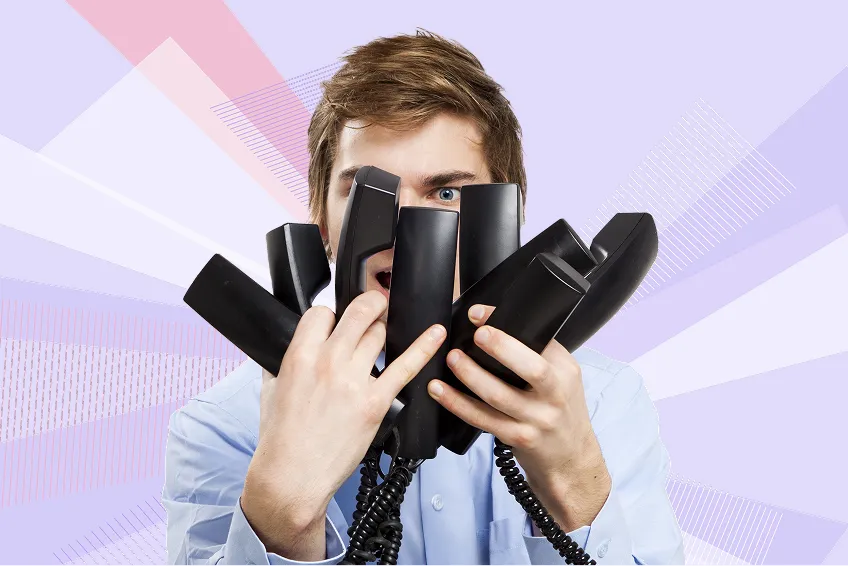For too long, medical practices have relied on phone calls to drive their patient communication efforts. In this day and age, phone calls alone aren’t enough — especially when hours can be wasted daily on routine phone outreach to patients. One alternative that patients prefer is two-way messaging. In this post, we discuss the definition of two-way messaging and benefits to consider offering at your practice.
What is a two-way messaging platform?
In recent years, messaging platforms and other service providers like Klara® have emerged to help medical practices leverage SMS to stay in touch with patients. These platforms automate routine patient outreach and allow practices to communicate with patients via text, both synchronously and asynchronously. An added benefit is that they allow patients to respond to messages from providers on their mobile phones without logging into a portal or downloading an app.
Benefits of a two-way messaging platform
1. Automates manual workflows to improve efficiency
Two-way messaging platforms can help you streamline your practice’s communication workflows and automate routine patient outreach across the patient journey. For example:
- Pre-visit outreach: Send automatic appointment reminders, collect insurance and other intake information, and share any relevant pre-visit instructions.
- Virtual visits: Share links your patients can use to launch video visits.
- Post-visit outreach: Send payment reminders, no-show follow-ups, satisfaction surveys and more.
Rather than have your staff continue to spend their time calling patients with the above communications, let your messaging platform automate and digitize this outreach so staff can focus their time on your patients’ needs.
2. Centralizes patient communications
These platforms allow healthcare providers to centralize patient communications across devices. With solutions like Klara, communications are synthesized into a single conversation thread. This means that every message — whether it’s automated, sent manually, or initiated by the patient — is saved to one place and can be accessed by approved users. This functionality helps team members stay on the same page, takes the pressure off of one person to manage all conversations, and keeps staff feeling confident that details aren’t falling through the cracks.
3. Avoids using an office or physician phone number for messaging
In general, two-way messaging with patients does not mean that a doctor needs to use their personal phone to communicate with patients. Instead, they’d use a practice-owned mobile phone number or computer, with messages going to the two-way messaging platform, not directly to the provider’s device.
4. Improves patient communication
Several studies point to two-way messaging as a preferred communication method for patients:
- One study found that text messaging was preferred by patients over email, phone, and letters. 95% of patients use text messaging, 78% want to receive appointment reminders via text, and 56% want text reminders about expiring insurance.
- People reliably open and respond to text messages. They have a 98% open rate and the average person responds to an SMS message within 90 seconds.
Two-way messaging with patients holds the potential to improve your patient communication efforts and boost response rates, because you’ll finally be engaging patients in the way they want and expect to be contacted.
5. Increases patient satisfaction
Because you’ll be offering patients a communication method they prefer, they’re more likely to be satisfied with their overall experience. Not only will they be able to communicate with your practice on the go, they won’t necessarily need to remember a username or password, or play phone tag with your office. Still not convinced? Some two-way messaging platforms, like Klara, allow you to send automated patient satisfaction surveys via text, so you can easily collect data to gauge how patients feel about your practice and their appointment experiences.
6. Reduces no-shows
When you send appointment reminders that patients can easily receive and respond to, it can help reduce your no-show rates. In fact, one study shows the use of SMS appointment reminders potentially offers a cost-effective and time-efficient strategy to decrease no-shows by 38%. Additionally, you can leverage two-way messaging to bolster your patient collections efforts by sending automated payment reminders. These reminders can help capture patient payments and prevent balances from becoming overdue in the first place.
How Klara’s messaging platform improves the lives of providers and staff
Klara, a conversational patient engagement platform, offers two-way messaging along with other powerful workflow tools. Klara’s solution helps healthcare professionals automate routine patient outreach and communicate with patients both asynchronously and in real time. No matter who initiates a message or whether it’s sent automatically or manually, all communications are saved to a single conversation thread. Schweiger Dermatology Group has saved hundreds of hours of phone calls by using Klara’s automated messaging platform. Klara can help you reap the text-enabled communication benefits outlined above.
Klara does not recommend sending sensitive information, including PHI, through SMS text messaging. When providers send sensitive messages to patients through the Klara platform, the patient receives an SMS message that contains a link to Klara’s secure platform, where the contents of the message are encrypted. Patients may send SMS text messages directly to the provider, and patients are free to include any content, but Klara recommends that patients use mobile messaging within the Klara platform to communicate sensitive information with providers.










